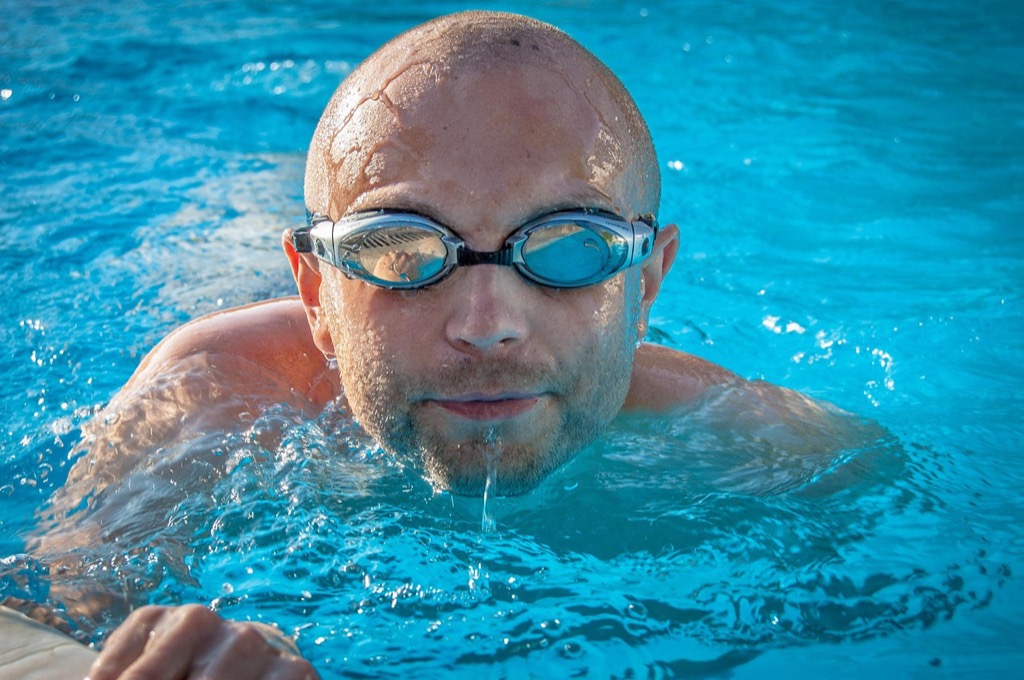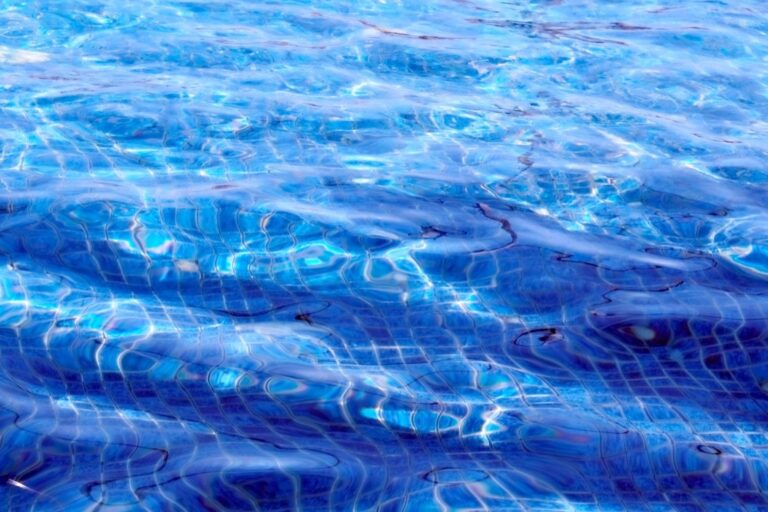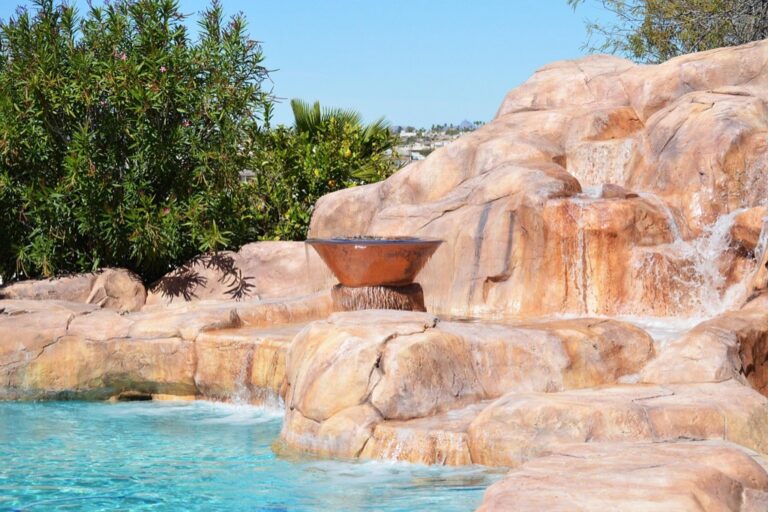8 Ways How to Create a Sustainable Pool Environment That Protect Our Waters
Transform your pool into an eco-friendly oasis with energy-efficient equipment, natural filtration, water conservation, and solar power—saving up to 90% on costs.
Your backyard pool doesn’t have to be an environmental burden. Modern pool technology and smart maintenance practices can transform your swimming space into an eco-friendly oasis that saves money while protecting the planet.
Creating a sustainable pool environment involves strategic equipment upgrades energy-efficient systems and water conservation techniques that reduce your carbon footprint. These changes can cut your pool’s energy consumption by up to 70% while maintaining crystal-clear water quality.
The shift toward green pool management isn’t just about environmental responsibility—it’s about long-term cost savings and enhanced swimming experiences that benefit both your family and the environment.
Disclosure: As an Amazon Associate, this site earns from qualifying purchases. Thank you!
Choose Energy-Efficient Pool Equipment
Upgrading your pool equipment represents the most impactful step toward sustainable pool ownership. Modern energy-efficient systems can slash your operational costs while maintaining superior water quality and comfort.
Install Variable Speed Pool Pumps
Keep your pool crystal clear with the KimFilter Pro Series 1000 GPH filter pump. It uses hydroaeration technology and an efficient Type A/C cartridge to powerfully circulate and filter your pool water, removing debris and maintaining a healthy pH balance.
Variable speed pumps use up to 90% less energy than traditional single-speed models by automatically adjusting motor speed based on your pool’s needs. You’ll save $300-800 annually on electricity bills while extending equipment lifespan and reducing noise levels significantly.
Upgrade to LED Pool Lighting Systems
Create vibrant ambiance with these submersible LED lights. Featuring 13 LEDs, a 200ft RF remote, and strong magnets/suction cups, they offer 16 colors, multiple modes, and extended battery life for versatile underwater or outdoor use.
LED pool lights consume 75% less energy than traditional incandescent bulbs while lasting 25 times longer. You’ll enjoy vibrant color options and programmable features that create stunning nighttime ambiance while reducing replacement costs and maintenance requirements.
Select High-Efficiency Pool Heaters
Heat 5 gallons of water in minutes with this 1500W immersion heater. It features a stainless steel cover for safety and intelligent temperature control with automatic shut-off at 165°F.
Heat pump pool heaters deliver 3-5 times more heating efficiency than gas heaters by extracting warmth from ambient air. You’ll achieve consistent water temperatures while reducing heating costs by 50-70% and minimizing your pool’s carbon footprint.
Implement Natural Pool Filtration Systems
Enjoy safe, great-tasting water with the APEC ROES-50 Reverse Osmosis System. This WQA-certified, USA-assembled system removes up to 99% of impurities and includes a lead-free designer faucet.
Natural filtration systems work alongside your pool’s existing equipment to create a self-sustaining ecosystem. These biological approaches reduce chemical dependency while maintaining crystal-clear water through nature’s own purification processes.
Install Biological Filtration Methods
Beneficial bacteria colonies transform harmful ammonia and nitrites into harmless nitrates through nitrification. You’ll establish these bacterial communities in specialized bio-media chambers or porous substrates within your filtration system. Most systems reach full biological capacity within 4-6 weeks, reducing chlorine needs by 30-50% once established.
Use Plant-Based Water Treatment Solutions
Aquatic plants like water hyacinths and hornwort absorb excess nutrients that feed algae growth. Install floating plant baskets or dedicated plant zones that process 500-1000 gallons per plant grouping daily. These natural filters remove phosphates and nitrates while producing oxygen, creating a balanced aquatic environment.
Incorporate Gravel and Sand Filter Systems
Get pure, healthy water with the NSF certified iSpring RCC7AK reverse osmosis system. It features a patented faucet design for easy installation and adds essential minerals for a balanced pH.
Multi-stage gravel beds with varying particle sizes trap debris and support beneficial bacteria colonies. Layer coarse gravel (2-4 inches) over fine sand (6-12 inches) in dedicated filter chambers or separate zones. This natural media filters particles down to 20-40 microns while providing surface area for biological processes.
Optimize Pool Chemical Management
Smart chemical management reduces environmental impact while maintaining crystal-clear water. You’ll cut chemical costs by 40-60% while creating a healthier swimming environment.
Switch to Eco-Friendly Pool Sanitizers
Keep hands clean and moisturized with this 6-pack of hand sanitizer. The 62% ethyl alcohol formula is enriched with aloe vera and vitamin E to keep your skin soft.
Mineral sanitizers like copper-silver ionization systems eliminate 99.9% of bacteria using natural metals instead of harsh chemicals. Saltwater chlorination produces chlorine naturally through electrolysis, reducing traditional chlorine needs by 80%. Ozone generators destroy contaminants without leaving chemical residues, creating softer water that’s gentler on skin and swimwear.
Maintain Proper pH Balance Naturally
Baking soda raises pH levels naturally without synthetic alkalinity increasers, costing 75% less than commercial products. Muriatic acid lowers pH effectively when diluted properly, requiring smaller quantities than liquid pH reducers. Test water twice weekly using digital meters for precise readings, preventing chemical overcorrection that wastes money and harms equipment.
Reduce Chlorine Usage with Alternative Methods
UV sterilization systems destroy 99.99% of pathogens without chemicals, cutting chlorine demand by 50-80% while eliminating chloramine odors. Enzyme treatments break down organic waste naturally, reducing chlorine consumption and extending water life. Phosphate removers prevent algae growth at the source, allowing lower chlorine levels while maintaining sparkling water quality.
Design Water Conservation Strategies
Effective water conservation transforms your pool from a resource drain into an efficient aquatic system. Smart design choices can reduce water waste by 40-60% while maintaining perfect swimming conditions.
Install Pool Covers to Reduce Evaporation
Pool covers eliminate 95% of water evaporation, saving 1,000-2,000 gallons monthly during peak summer months. Automatic covers provide convenience while thermal covers retain heat and reduce chemical loss. Solar covers offer dual benefits by heating water naturally while preventing evaporation losses.
Implement Rainwater Collection Systems
Rainwater harvesting systems capture roof runoff to supplement pool water needs, reducing municipal water usage by 30-50%. Install gutters that direct water through filters into storage tanks for later use. Strategic positioning of collection barrels near downspouts maximizes capture during seasonal rainfall patterns.
Use Automatic Pool Fill Systems
Automatic fill systems maintain optimal water levels without overflow waste, preventing both underfilling and overfilling scenarios. Float valves and electronic sensors detect water levels and add precise amounts as needed. These systems prevent the common mistake of manual overfilling that wastes hundreds of gallons weekly.
Create Natural Pool Landscaping
Natural landscaping transforms your pool area into an eco-friendly oasis that complements your sustainable water management efforts. Strategic plant placement and hardscaping choices can reduce maintenance needs while creating a beautiful, environmentally conscious outdoor space.
Plant Native Vegetation Around Pool Areas
Native plants require 50% less water than non-native species and naturally thrive in your local climate. Choose drought-resistant varieties like ornamental grasses, native shrubs, and flowering perennials that won’t drop excessive debris into your pool. These plants attract beneficial insects while reducing your irrigation needs and creating natural habitat around your sustainable pool environment.
Design Windbreaks to Reduce Water Loss
Strategic windbreaks can reduce pool evaporation by 25-40% while providing privacy and natural beauty. Plant evergreen trees or install living walls with climbing vines 10-15 feet from your pool’s prevailing wind side. Bamboo screens and native hedge plants create effective barriers that complement your pool cover‘s water conservation efforts.
Install Permeable Hardscaping Materials
Permeable pavers and natural stone decking allow rainwater to filter into the ground instead of creating runoff. These materials reduce standing water around your pool while preventing erosion and chemical washout during storms. Permeable surfaces also stay cooler than traditional concrete, creating a more comfortable walking surface and reducing the heat island effect around your pool area.
Establish Solar-Powered Pool Operations
Harnessing the sun’s energy transforms your pool into a self-sustaining system that operates independently from the electrical grid. Solar-powered operations reduce energy costs by 80-90% while maintaining optimal water conditions year-round.
Install Solar Pool Heating Systems
Solar pool heaters capture sunlight through roof-mounted collectors, circulating pool water through heated tubes before returning it to your pool. These systems maintain water temperatures 8-12°F above ambient air temperature without ongoing energy costs. Professional installation typically pays for itself within 3-5 years through eliminated heating bills.
Use Solar-Powered Pool Equipment
Solar pumps operate variable-speed circulation systems during peak sunlight hours, reducing grid dependency by 60-80%. Battery backup systems store excess solar energy for evening filtration cycles and cloudy days. Solar-powered automatic cleaners and LED lighting complete your off-grid pool ecosystem while maintaining professional water quality standards.
Implement Solar Water Circulation Methods
Solar-powered circulation systems use photovoltaic panels to run pumps during optimal sun exposure, naturally aligning with when pools need the most filtration. Smart controllers automatically adjust pump speeds based on available solar energy, maximizing efficiency. This approach reduces electricity consumption by 70-85% while ensuring proper water turnover during daylight swimming hours.
Monitor and Maintain Water Quality Naturally
Maintaining crystal-clear water naturally requires consistent monitoring and strategic adjustments using eco-friendly methods. You’ll create a sustainable pool environment that supports both swimmers and beneficial microorganisms through regular testing and natural balancing techniques.
Test Water Using Eco-Friendly Methods
Digital test strips provide accurate readings without generating chemical waste from traditional liquid reagents. You’ll get instant pH, alkalinity, and chlorine measurements while reducing your environmental footprint by 40-50% compared to liquid test kits.
Test twice weekly during swimming season using recyclable strips that biodegrade within 90 days.
Balance Minerals Without Harsh Chemicals
Baking soda naturally raises pH and alkalinity levels while muriatic acid safely lowers them when needed. You’ll maintain proper water balance using household products that cost 60% less than commercial pool chemicals.
Add borax to stabilize pH fluctuations and prevent scale buildup on pool surfaces and equipment.
Implement Regular Natural Cleaning Routines
Skim debris daily and brush walls weekly to prevent algae growth without chemical interventions. You’ll maintain water clarity through physical cleaning methods that support your pool’s natural ecosystem.
Vacuum using solar-powered equipment during peak sunlight hours to maximize energy efficiency and water circulation.
Integrate Smart Pool Technology
Smart technology transforms pool maintenance from guesswork into precision-driven sustainability. Modern automated systems reduce chemical usage while optimizing energy consumption year-round.
Use Automated Pool Management Systems
Automated systems monitor pH levels and chlorine output continuously, adjusting chemical dosing by 20-30% to maintain perfect water balance. These smart controllers learn your pool’s patterns and reduce chemical waste through precise timing. Installation typically pays for itself within 18 months through reduced chemical costs and energy savings.
Install Water Quality Monitoring Sensors
Digital sensors provide real-time water chemistry data, preventing chemical overcorrection that wastes resources and damages equipment. Smart monitors alert you to imbalances before they become costly problems, reducing emergency chemical treatments by 60%. WiFi-enabled sensors let you track water quality remotely and maintain optimal conditions without constant manual testing.
Implement Energy Usage Tracking Tools
Energy monitoring systems identify peak consumption periods and optimize equipment runtime to reduce electricity costs by 25-40%. Smart meters track pump cycles, heating patterns, and filtration schedules to maximize efficiency during off-peak hours. These tools reveal which equipment upgrades provide the highest return on investment for sustainable pool operations.
Conclusion
Creating a sustainable pool environment isn’t just about environmental responsibility—it’s a smart investment in your home’s future. You’ll reduce your energy costs by up to 90% while enjoying cleaner water that’s gentler on your skin and eyes.
The combination of modern technology and natural solutions gives you complete control over your pool’s efficiency. From solar heating systems to biological filtration methods you’re building an ecosystem that works with nature rather than against it.
Your sustainable pool transformation starts with small changes that deliver immediate results. Whether you begin with LED lighting or implement smart monitoring systems you’re taking meaningful steps toward long-term savings and environmental stewardship.
The future of pool ownership is sustainable and the technology exists today to make it happen in your backyard.
Frequently Asked Questions
How much can eco-friendly pool upgrades reduce energy consumption?
Modern eco-friendly pool systems can reduce energy consumption by up to 70% through efficient equipment and smart maintenance practices. Variable speed pumps alone can cut energy use by 90%, while LED lighting consumes 75% less energy than traditional bulbs. These upgrades not only support environmental sustainability but also provide significant long-term cost savings for homeowners.
What are the main benefits of variable speed pool pumps?
Variable speed pool pumps can reduce energy consumption by up to 90% compared to single-speed pumps, saving homeowners $300-800 annually on electricity bills. These pumps operate more efficiently by adjusting motor speed based on pool needs, resulting in quieter operation, longer equipment life, and dramatically lower energy costs while maintaining excellent water circulation.
How do natural pool filtration systems work?
Natural pool filtration systems use beneficial bacteria to convert harmful substances into harmless nitrates, creating a self-sustaining ecosystem. These biological filtration methods work alongside existing equipment to reduce chlorine dependency by 30-50% while maintaining crystal-clear water. Plant-based treatments and gravel filter systems further enhance natural filtration capabilities.
Can pool covers really save that much water?
Yes, pool covers can eliminate up to 95% of water evaporation, saving 1,000-2,000 gallons monthly during peak summer months. This translates to reducing water waste by 40-60% overall. Automatic and thermal covers provide additional benefits like heat retention, while solar covers offer dual benefits of heating water and preventing evaporation.
How effective are solar-powered pool systems?
Solar-powered pool operations can reduce energy costs by 80-90% while maintaining optimal water conditions year-round. Solar heating systems typically pay for themselves within 3-5 years, while solar-powered equipment reduces grid dependency. Photovoltaic panels can decrease electricity consumption by 70-85% during peak sunlight hours, making pools nearly energy-independent.
What natural methods can reduce chemical usage?
Natural pool management can cut chemical costs by 40-60% through various eco-friendly methods. UV sterilization systems, enzyme treatments, and mineral sanitizers minimize harsh chemical dependency. Regular testing with digital strips reduces chemical waste by 40-50%, while maintaining proper pH balance with household products like baking soda provides cost-effective water management.
How much water can rainwater collection systems save?
Rainwater collection systems can reduce municipal water usage by 30-50% by capturing roof runoff for pool use. Combined with automatic fill systems that prevent overflow waste, these conservation strategies can save hundreds of gallons weekly. This approach transforms pools from resource drains into efficient aquatic systems that work with natural water cycles.
Do smart pool technologies really improve efficiency?
Smart pool technology enhances sustainability by providing precise maintenance control. Automated management systems reduce chemical waste by 20-30% through continuous monitoring, while digital sensors prevent costly overcorrection. Energy tracking tools optimize equipment runtime, reducing electricity costs by 25-40% and ensuring efficient pool operations through data-driven maintenance decisions.










